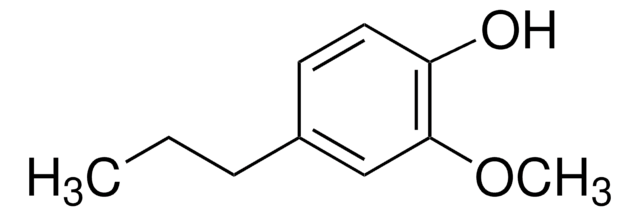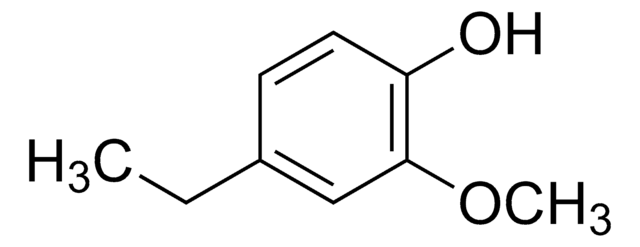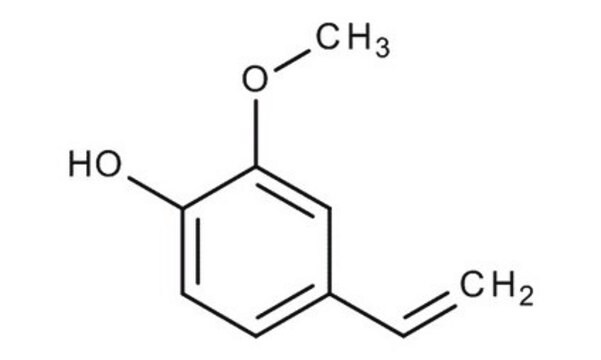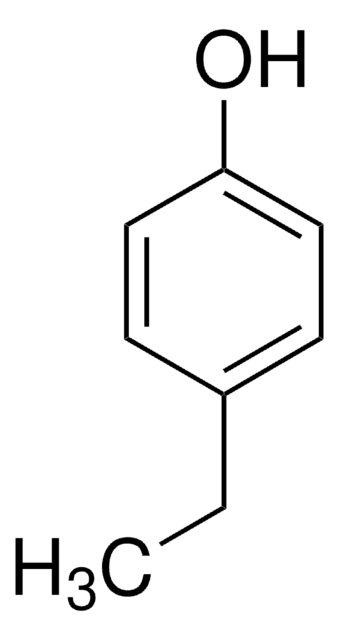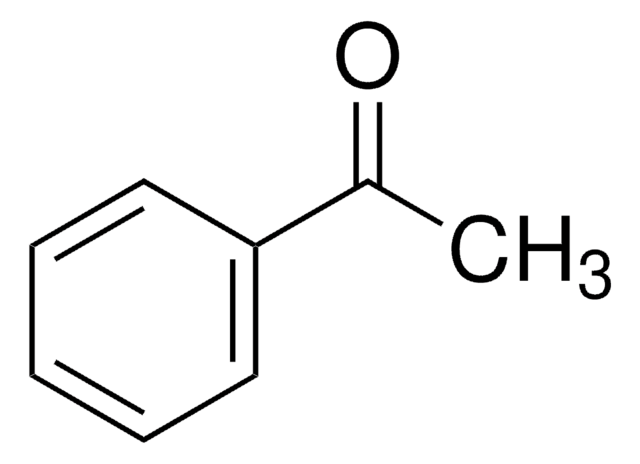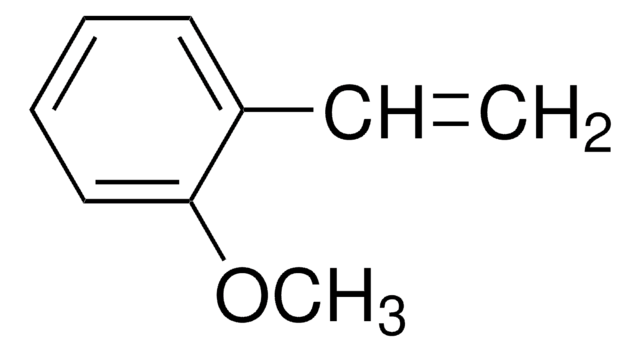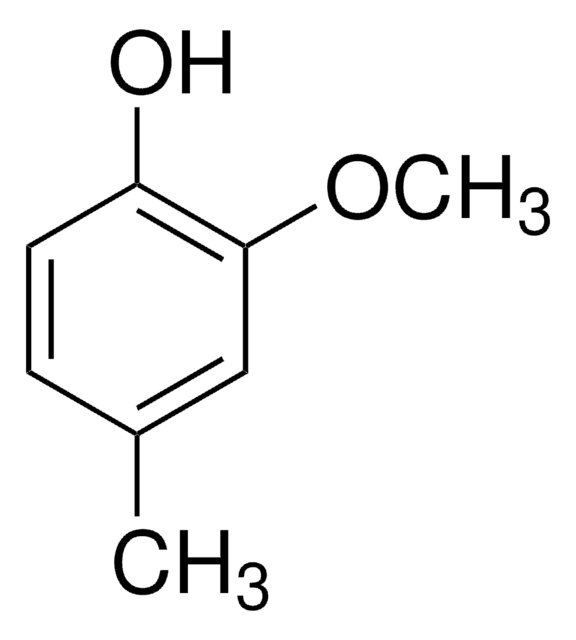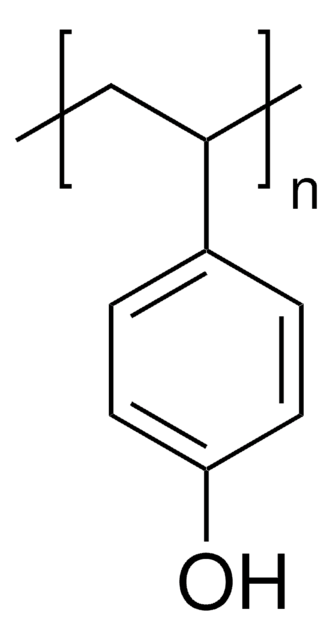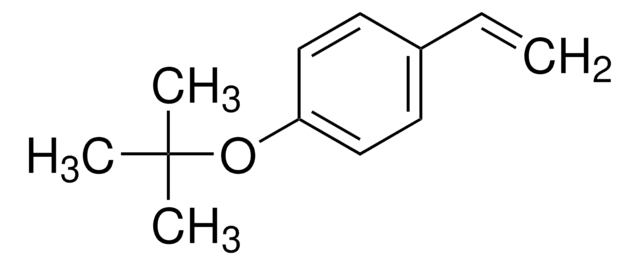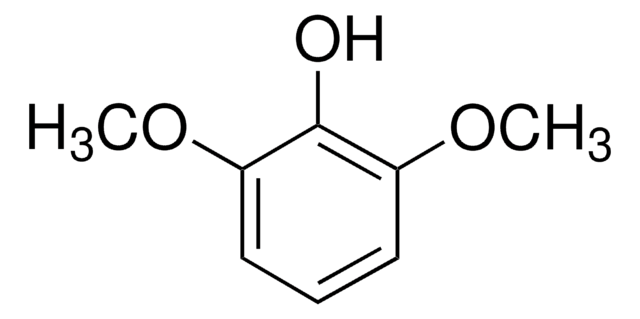Wichtige Dokumente
W267511
2-Methoxy-4-vinylphenol
≥98%, FG
Synonym(e):
4-Vinylguaiacol
About This Item
Fragrance grade
Halal
Kosher
meets purity specifications of JECFA
Empfohlene Produkte
Biologische Quelle
synthetic
Qualitätsniveau
Qualität
FG
Fragrance grade
Halal
Kosher
Agentur
follows IFRA guidelines
meets purity specifications of JECFA
Einhaltung gesetzlicher Vorschriften
EU Regulation 1223/2009
EU Regulation 1334/2008 & 178/2002
FDA 21 CFR 117
FDA 21 CFR 172.515
Assay
≥98%
Brechungsindex
n20/D 1.582 (lit.)
bp
224 °C (lit.)
Dichte
1.11 g/mL at 25 °C (lit.)
Anwendung(en)
flavors and fragrances
Dokumentation
see Safety & Documentation for available documents
Nahrungsmittelallergen
no known allergens
Allergener Duftstoff
no known allergens
Organoleptisch
cedar; woody; peanut
SMILES String
COc1cc(C=C)ccc1O
InChI
1S/C9H10O2/c1-3-7-4-5-8(10)9(6-7)11-2/h3-6,10H,1H2,2H3
InChIKey
YOMSJEATGXXYPX-UHFFFAOYSA-N
Suchen Sie nach ähnlichen Produkten? Aufrufen Leitfaden zum Produktvergleich
Allgemeine Beschreibung
Anwendung
- Anti-Ulcerative Colitis Effects and Active Ingredients in Ethyl Acetate Extract from Decoction of Sargentodoxa cuneata.: In dieser Studie wird das therapeutische Potenzial von Sargentodoxa cuneata bei der Behandlung von Colitis ulcerosa untersucht, mit besonderem Fokus auf dem Wirkstoff 2-Methoxy-4-vinylphenol. Sie bietet wertvolle Daten für Chemiker, die an neuen Therapien für entzündliche Erkrankungen arbeiten (Yu et al., 2023).
- Phytochemical characterization, anti-diarrhoeal, analgesic, anti-inflammatory activities and toxicity profile of Ananas comosus (L.) Merr (pineapple) leaf in albino rats.: Diese umfassende Studie bewertet die medizinischen Eigenschaften von Ananasblättern und identifiziert 2-Methoxy-4-vinylphenol als eine seiner phytochemischen Substanzen. Sie bietet Anhaltspunkte für weitere Forschungsarbeiten zur Anwendung im Bereich Schmerzlinderung und Entzündungshemmung (Ugobu et al., 2024).
Verpackung
Signalwort
Danger
H-Sätze
Gefahreneinstufungen
Eye Dam. 1 - Skin Corr. 1B
Lagerklassenschlüssel
8B - Non-combustible corrosive hazardous materials
WGK
WGK 3
Flammpunkt (°F)
235.4 °F - closed cup
Flammpunkt (°C)
113 °C - closed cup
Persönliche Schutzausrüstung
Eyeshields, Gloves, type ABEK (EN14387) respirator filter
Hier finden Sie alle aktuellen Versionen:
Besitzen Sie dieses Produkt bereits?
In der Dokumentenbibliothek finden Sie die Dokumentation zu den Produkten, die Sie kürzlich erworben haben.
Kunden haben sich ebenfalls angesehen
Unser Team von Wissenschaftlern verfügt über Erfahrung in allen Forschungsbereichen einschließlich Life Science, Materialwissenschaften, chemischer Synthese, Chromatographie, Analytik und vielen mehr..
Setzen Sie sich mit dem technischen Dienst in Verbindung.


